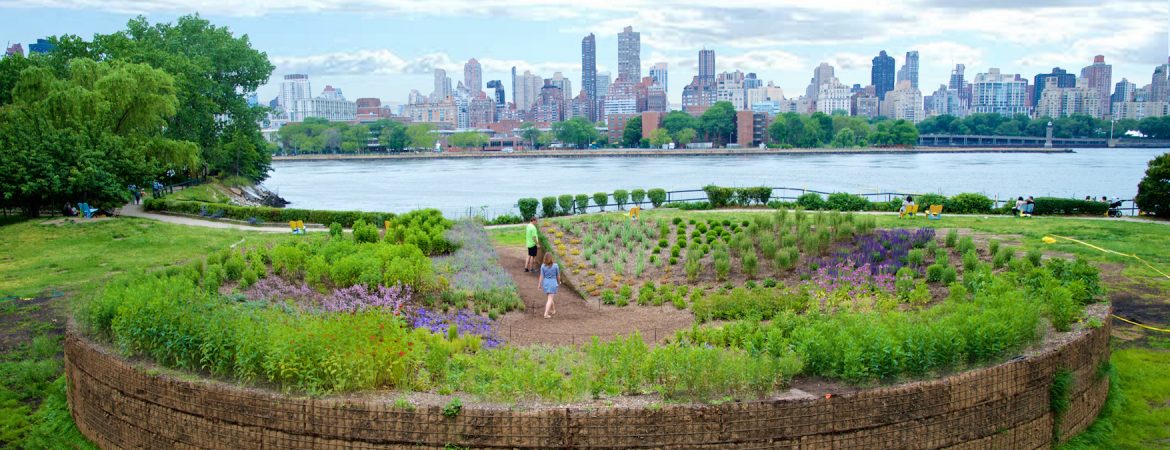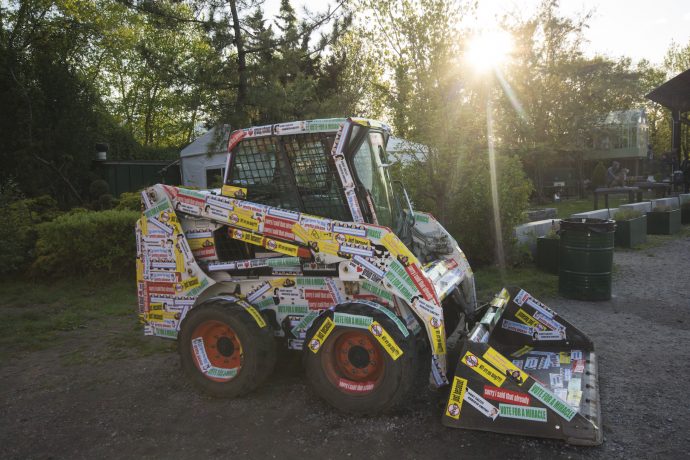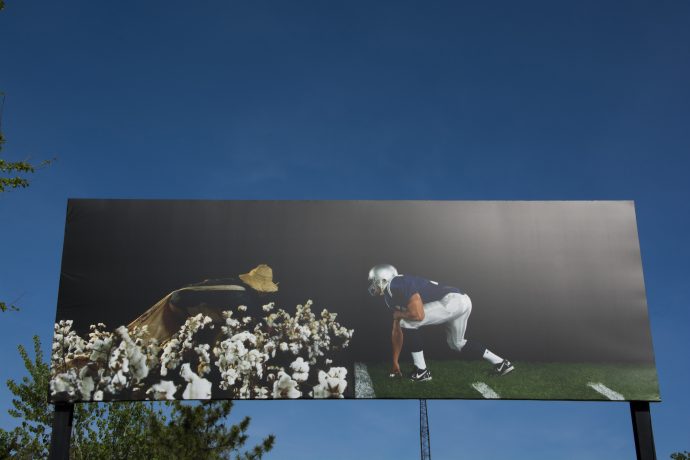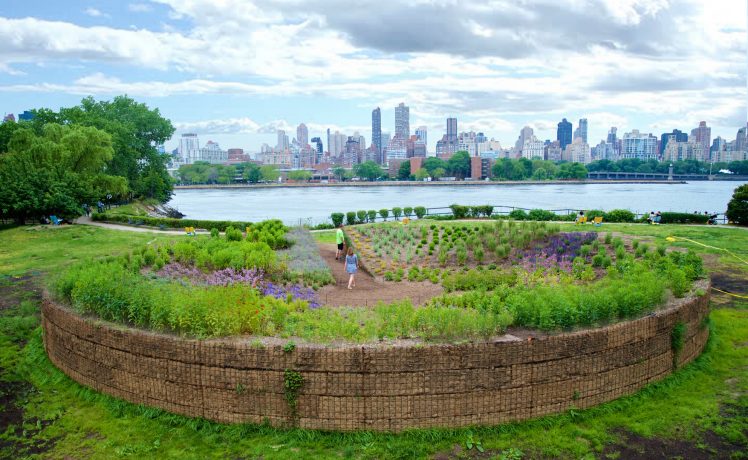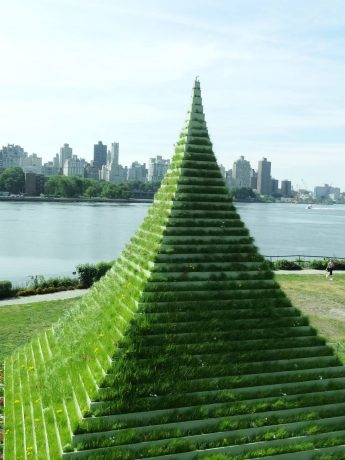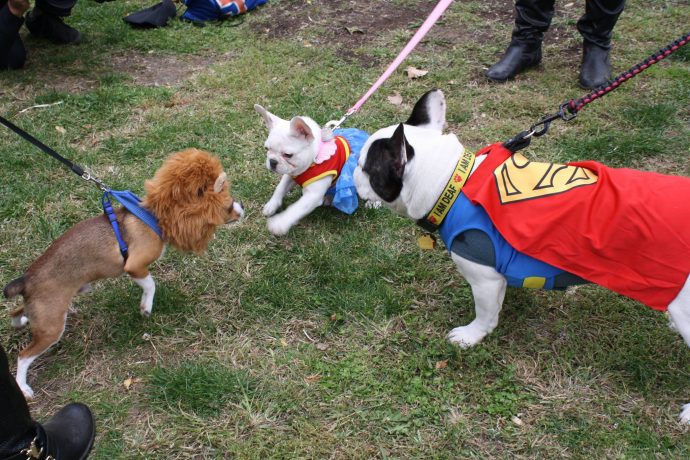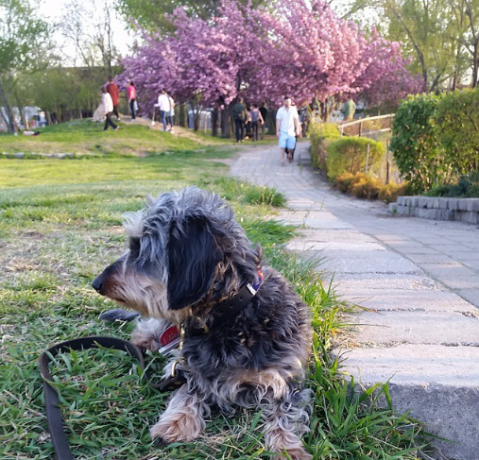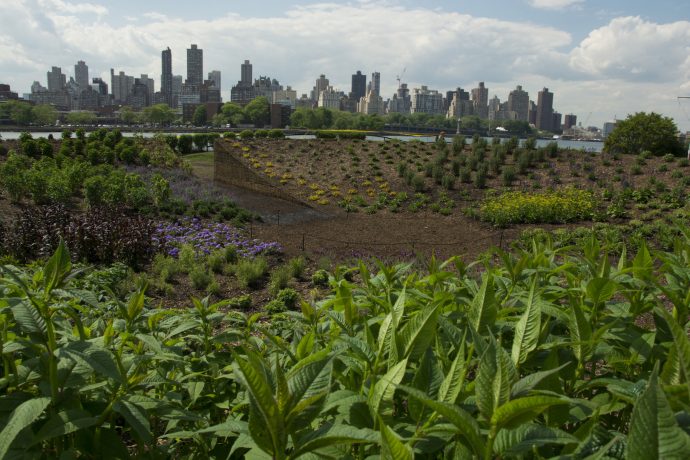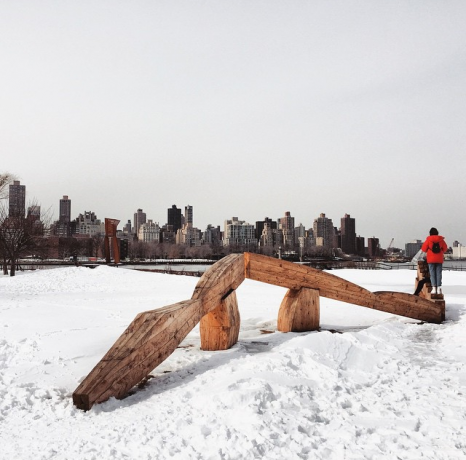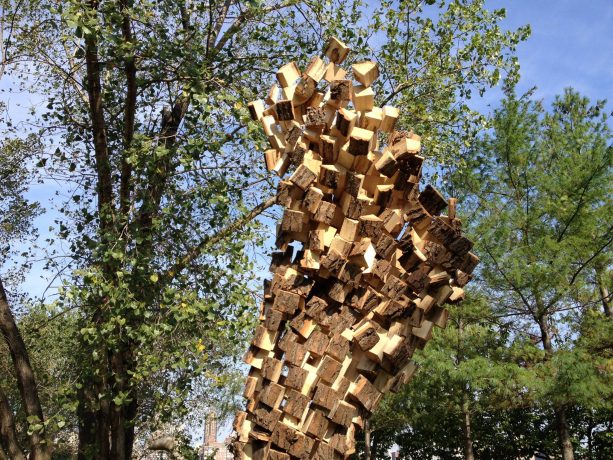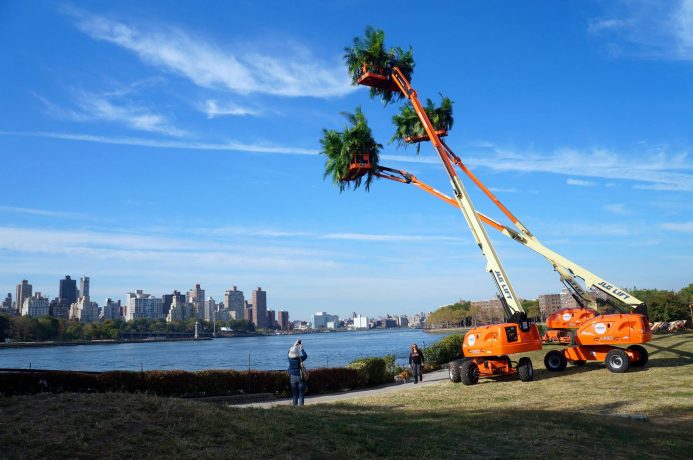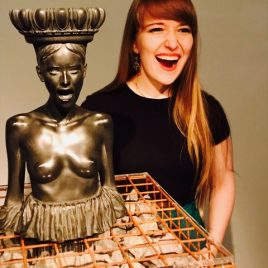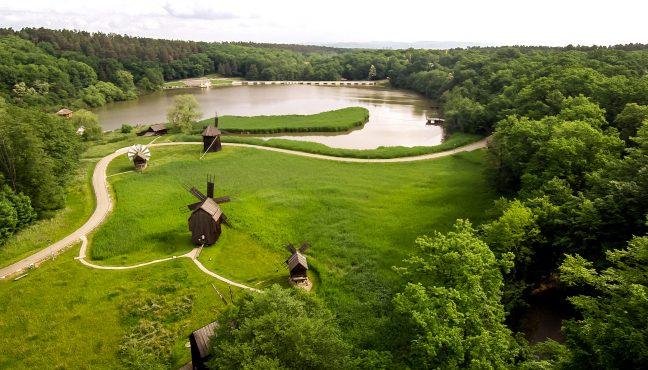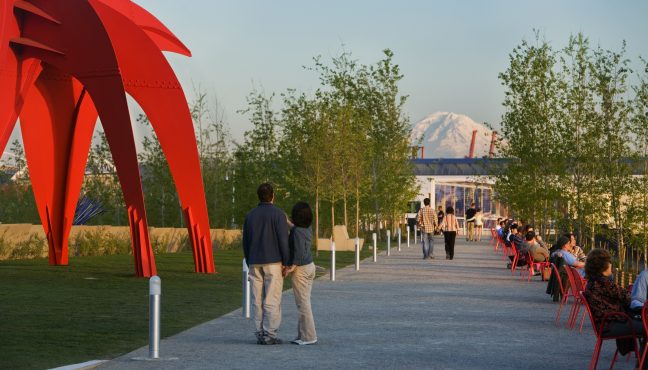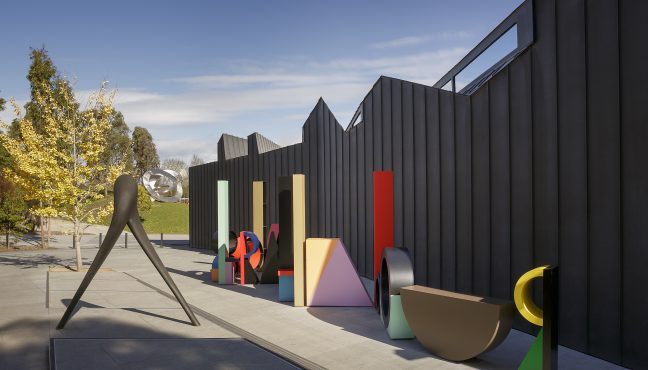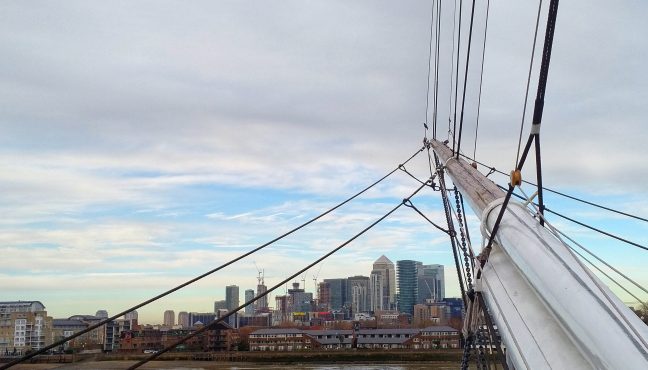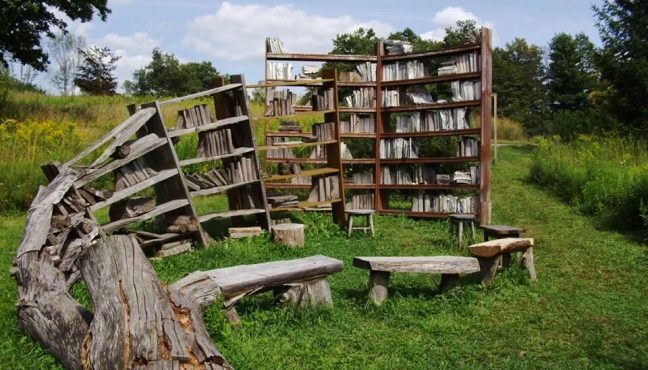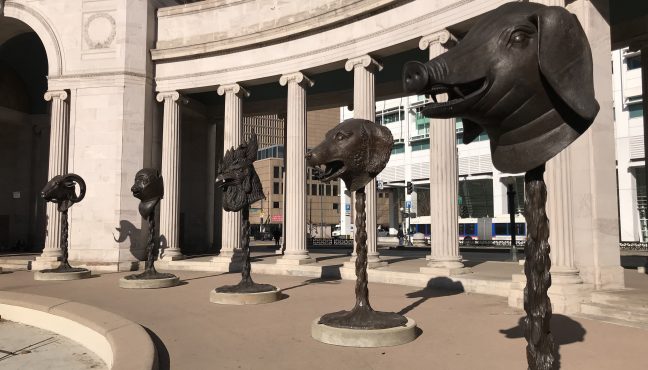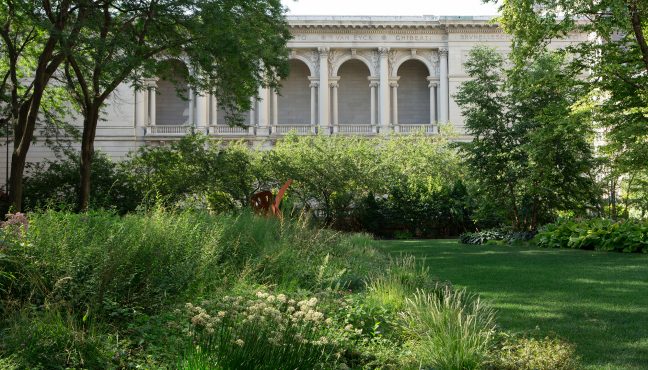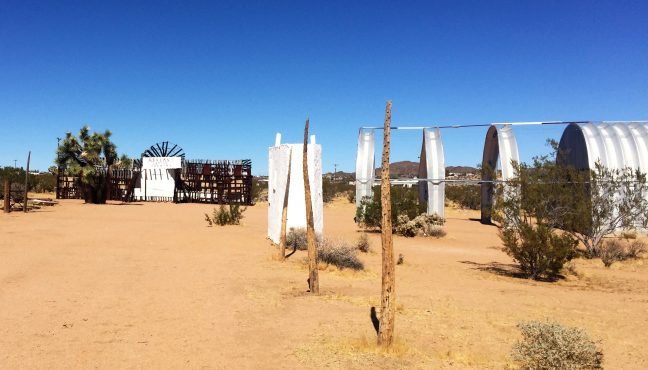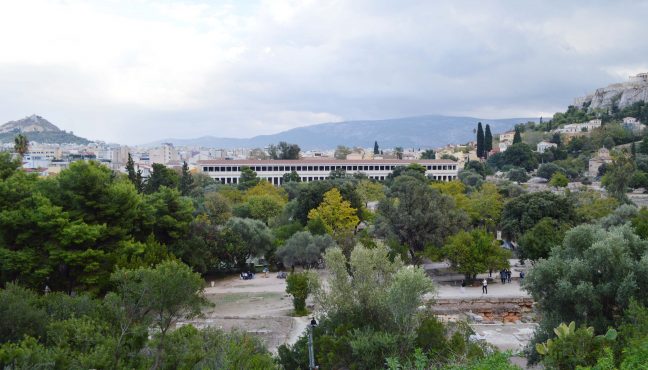If you want to feel like a New Yorker in NYC, then you don’t have to spend hundreds of dollars, you just need to know the City’s hidden gems. We suggest visiting a local jewel, created and cherished by the community – Socrates Sculpture Park in Queens, a picturesque outdoor museum overlooking Roosevelt Island and Manhattan. In 1986, the space could be called "a diamond in the rough" because, 30 years ago, a coalition of artists led by an American sculptor, Mark di Suvero, transformed a Long Island City abandoned landfill and illegal dumpsite into an open studio and exhibition space for artists and a neighborhood Park.
The four-acre site is the largest NYC outdoors space showing sculpture with exhibitions, arts education program, artist residency, film screenings, yoga, farmers’ market, and the admission is free!
Socrates is a peaceful and quiet place to unwind, relax, and meditate. Bring your own lawn chairs or blankets to feel even cozier, moreover, while you are there you can catch multiple activities – yoga, art therapy, film screenings, opera, dance… This year celebrates the Socrates’ 30th anniversary and you have a few weeks to participate in special events. We talked to John Hatfield, Socrates Sculpture Park Executive Director about the anniversary and the park’s history.
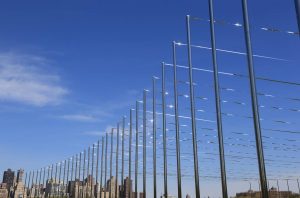
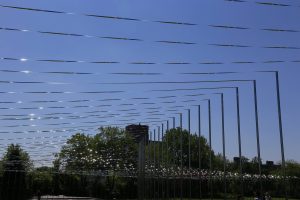
Socrates offers various activities every week, regardless of the anniversary, but what celebratory projects would you emphasize?
Several of the artist projects within the park’s 30th Anniversary Exhibition, LANDMARK, are additive - meaning, they are meant to elevate everyday functions of Socrates, whether stewardship and maintenance or installation and labor. Meg Webster’s Concave Room for Bees, for example, comprises 400 cubic yards of soil that, once deinstalled, will be spread across the landscape and provide nutrient rich topsoil to this landfill site. Projects by Cary Leibowitz and Brendan Fernandes each transformed functional tools used by the park — a Bobcat and caution tape, respectively - into works of art.
Apart from Mark di Suvero who recreated this space to be a sculpture park?
Isamu Noguchi was involved in some of the original planning, Astoria Houses residents were employed to help, all of the original artists of first exhibition cleaned up the site, NYC Mayor Koch endorsed the idea with Claire Shulman, Queens Borough President and several local businesses donated time and materials. The effort was truly communal and numerous people were instrumental in creating the park.
There were several landscape architects who were asked to envision a master plan for the park in the early years including; City College of New York – Urban Landscape Architecture Program students were the first and developed 10 schemes. Nancy Owens, landscape architect, did an early study in 1988 with historical analysis, site context, and vegetation inventory.
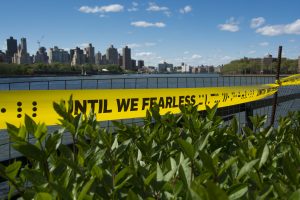
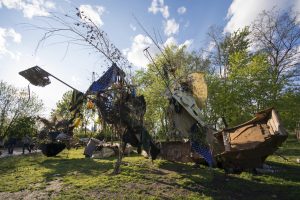
The artist residency program is an amazing opportunity for young artists to make a statement, can anyone participate and can artists count on financial support?
The annual Emerging Artist Fellowship program and exhibition is a cornerstone of Socrates Sculpture Park’s visual arts programming, widely acclaimed for the ambition, breadth, and innovation of selected contemporary works. A singular opportunity for rising artists to experiment with ambitious, large-scale public art, EAF provides young artists with an open studio, monetary support, and institutional guidance.
How do you choose the works? What is Socrates’ curatorial concept?
Socrates Sculpture Park curates and makes the selection of the artists. Primarily the focus is artists and projects, which would benefit from the unique circumstances of what the organization can provide and offers – the ability to fabricate, the community engagement and the natural landscape within a highly urban context. The park also engages and collaborates with outside curators, other arts organizations and partnerships.[/paragraph]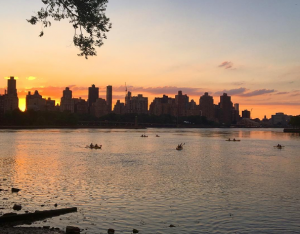
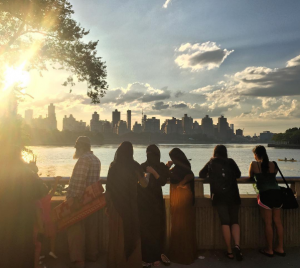
What would be your favorite season to be in the park?
The height of the summer months is extraordinary with everything in full bloom and a bee hive of activity. The opposite, dead of winter with a quiet blanket of snow is equally dramatic especially seeing the art works framed by white.
Maybe you have special suggestions for visitors?
A few years ago we started the LIC ART BUS, which is a free summer shuttle bus service that runs on weekends through September 11. The initiative aims to promote and connect Long Island City’s cultural institutions, including The Noguchi Museum, MoMA PS1, and Sculpture Center.
The Park creates a unique sense of community, allowing you to feel like a local. Different groups come together for different reasons – every morning before 9 AM you can meet groups of dogs walking their owners, many of whom became friends here in the park. Yogis, Tai Chi, and Capoeira fans meet on weekend mornings. Kayaking and Canoeing groups gather depending on the weather. And of course annual events, like Halloween and the Fourth of July are impressive and fun for the whole family in this peaceful space. During the sunset and a few hours before the Park closes, this hidden gem becomes even more homely, a rather isolated place makes you believe you are in the countryside but you are actually just a few stops away from the booming and busy NYC.
